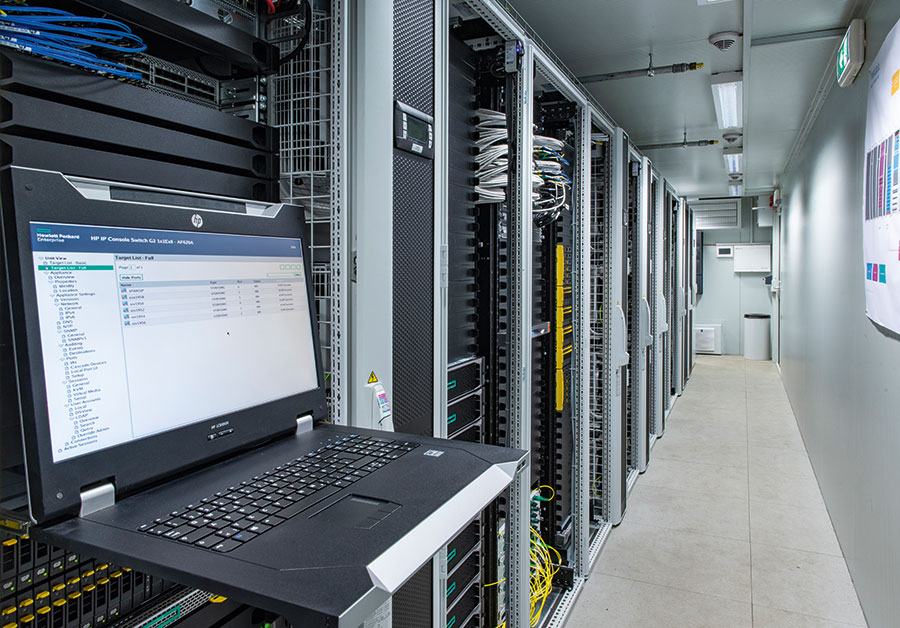Text Steffen Maltzan ––– Photography
The analysts on the Omdia consulting team expect global demand for computing power to grow ten-fold in the next five years, which in turn means expenditure of 30 billion dollars through GenAI alone. This is a huge technological revolution, not least when it comes to the cooling technology, since the enormous computing power and the associated electricity consumption are pushing energy efficiency requirements to a whole new level.
FIGHTING HEAT WITH WATER
GenAI applications need high performance processors (GPUs). These generate so much heat that the cold air currently used as standard will soon not be enough. To dissipate the heat quickly enough from the processors, these hotspots need to be enveloped by a flow of cooling liquid. “Water will come to play a greater role, especially as a single-phase direct liquid coolant,” explains Anna Klaft, Vice President Solution Sales IT at Rittal. “The big hyperscalers are currently investing heavily in AI. As a leading global supplier of racks for this sector, we engage in intensive dialogue with these customers when it comes to developing appropriate modular cooling solutions.”
OPTIMISING TO THE LIMIT
High performance data centres also need a lot of electricity. Their energy efficiency must therefore be optimised to the absolute limits of what is physically and economically possible. Although the majority of data centre operators are already very active in this regard, the government in Germany is looking to accelerate the process using the EnEfG. Klaft, who is also Chairperson of the German Datacenter Association (GDA), is very sceptical about this approach: “More distinctions should have been made in the requirements. Energy efficiency is a worthy ambition, but it mustn’t become an obstacle to expanding urgently required digital infrastructure.”
The Act stipulates that data centres going into operation after July 2026 must have a Power Usage Effectiveness (PUE) of 1.2. Such an impressive level of energy efficiency has to be carefully planned, however, and as Klaft acknowledges: “Most of the data centres that will be affected have already been planned or approved. If this act delays the construction of this kind of facility, it will slow down infrastructure that is desperately needed for the energy transition.”
JOINT SOLUTIONS
Klaft believes it would have been helpful to have greater differentiation when it comes to heat recovery. “A blanket obligation is no guarantee of efficiency. In many places, it will effectively mean a ban on new data centres. It is therefore now essential that the industry comes together to work on new solutions to ensure the law does not act as a brake on digitalisation. Water cooling with heat recovery is a prime example of this.”
This form of cooling offers excellent conditions for implementing the difficult heat recovery stipulations in the Energy Efficiency Act. Compared to the warm air currently used as standard, the cooling water for the high-performance processors comes out of the data centre at a higher temperature, meaning it is easier to warm it up with heat pumps to heat a building, for example – or to take the heat out of generative artificial intelligence.

